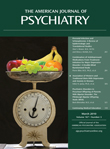Treating the "Untreatable": Healing in the Realms of Madness
There are many roads to recovery, I grant you that. But some have been shown to have a far greater likelihood of success than others; we call those evidence-based practices. For example, we know with confidence that the use of medication for people with schizophrenia reduces the risk of hospitalization fivefold, and that a comprehensive treatment of medication, family psychoeducation, case management, skill building, and problem-solving approaches reduces 1-year relapse rates from near certain to 14%. If my family member were ill, I would sure want to reduce the risks. Isn't all health care about reducing risks?
But not Dr. Steinman, I guess. His approach, presented through 12 case studies of individuals he treated over a long career, instead holds that psychodynamic therapy, provided multiple times per week over the course of years, is an effective treatment for "the most disturbed and psychotic patients" (p. xiii). He proposes that what these individuals need is "a working through of underlying psychological issues and emotions that have been warded off" (p. xiv). But he does not stop there; in fact, he claims that we in psychiatry have "lost our way…following psychiatric department chairmen who emphasise the ‘scientific' approach" (pp. 187–188). On a roll, he adds that psychiatry has "adopted a cult-like attitude to the benefits of antipsychotic medications and supportive psychotherapy," which includes cognitive therapies in his lexicon of treatments.
The cases themselves are an admixture of troubled individuals experiencing psychotic, dissociative, and mood disorders, which he seems to blend together as if they were all the same and thus amenable to his singular form of treatment. The author has a tendency to accept whatever the patient says as fact (as if memory, even childhood memory, were invariably accurately reported) and to blame parents for the ills of their children. Whenever a patient does better, he attributes their success to his work, even though that same person may have left a long-stay hospital for the community or had time to recover from what appeared to be a psychosis fostered by the use of "psychedelic" drugs.
I am all for talking with patients, and some of the case material is nicely framed examples of how we all resort to defensive psychological maneuvers to avoid emotional pain and conflict, but where has Dr. Steinman been? Donald Winnicott and the object relations school of dynamic therapy of psychoses have not stood the test of time (nor have they achieved any more than anecdotal support). The author need not create dialectic between handholding and intensive dynamic therapy; after all, we have learned some things since the 1930s. No wonder he says, "I am left with a question…why did these patients not get appropriate treatment?" If he read the Surgeon General's report on mental health, he would know something about the "science to practice gap" that bedevils medicine, including psychiatry, and would be considering ways to improve access and provide effective treatments to people in need, rather than proposing an intervention that at best should be coupled with the interventions we know to work, and at worst can itself produce regression, more years of dysfunction, and tragically missed opportunities to have a life.



